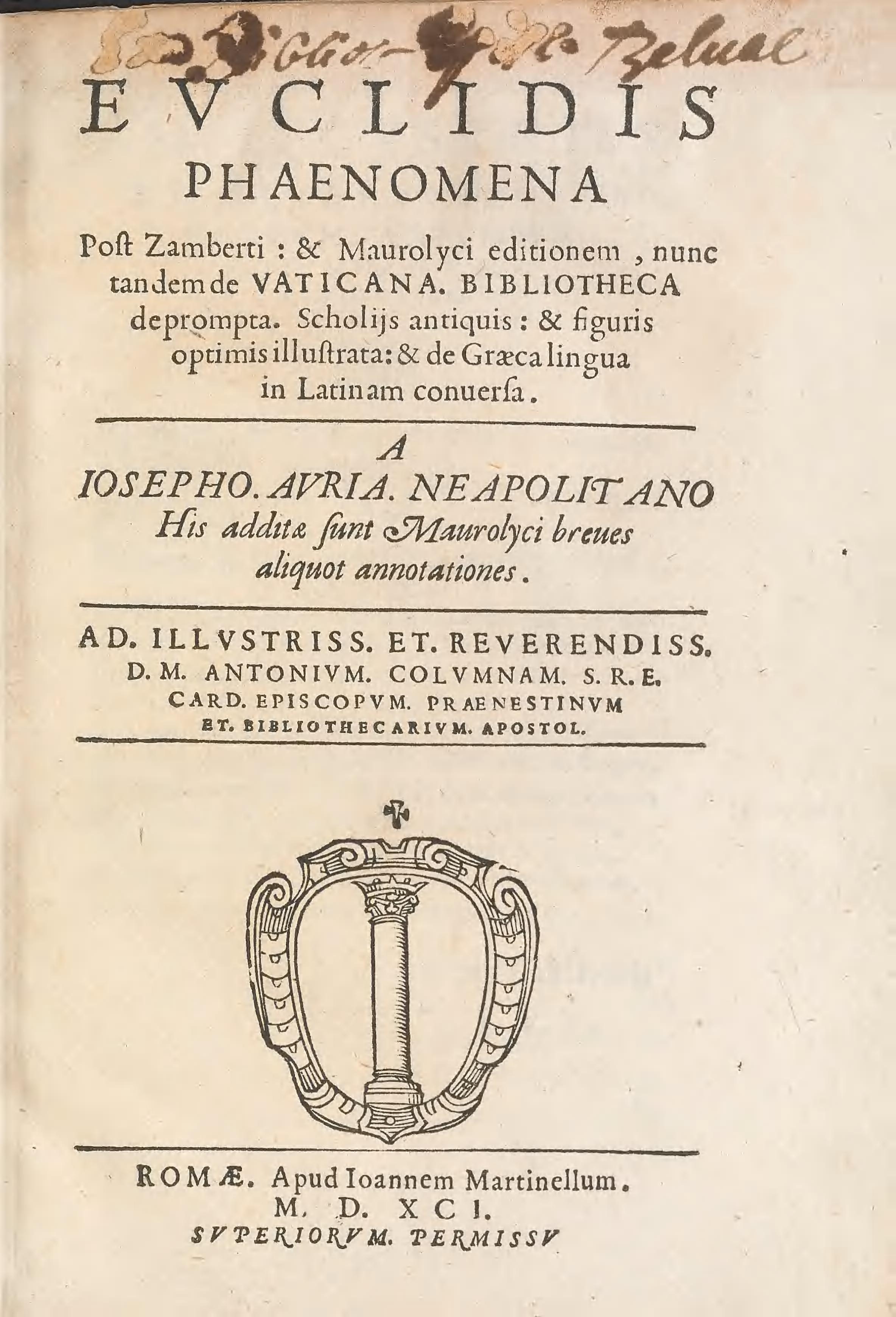|
Euclid's Phaenomena
''Phaenomena'' is a work by Euclid on spherical astronomy. The book is divided into 18 propositions, each dealing with "the important arcs on the celestial sphere". The book was fully translated into English in 1996, authors used two surviving copies for translation. Translations ;Latin *:File:Euclidis Phaenomena.pdf, ''Euclidis Phaenomena'', published in Romæ, 1591 ;English * References Further reading * Otto Neugebauer: ''A History of Ancient Mathematical Astronomy'', New York-Heidelberg-Berlin 1975 {{Ancient Greek mathematics Works by Euclid ... [...More Info...] [...Related Items...] OR: [Wikipedia] [Google] [Baidu] |
Euclid
Euclid (; ; BC) was an ancient Greek mathematician active as a geometer and logician. Considered the "father of geometry", he is chiefly known for the '' Elements'' treatise, which established the foundations of geometry that largely dominated the field until the early 19th century. His system, now referred to as Euclidean geometry, involved innovations in combination with a synthesis of theories from earlier Greek mathematicians, including Eudoxus of Cnidus, Hippocrates of Chios, Thales and Theaetetus. With Archimedes and Apollonius of Perga, Euclid is generally considered among the greatest mathematicians of antiquity, and one of the most influential in the history of mathematics. Very little is known of Euclid's life, and most information comes from the scholars Proclus and Pappus of Alexandria many centuries later. Medieval Islamic mathematicians invented a fanciful biography, and medieval Byzantine and early Renaissance scholars mistook him for the earlier philo ... [...More Info...] [...Related Items...] OR: [Wikipedia] [Google] [Baidu] |
Spherical Astronomy
Spherical astronomy, or positional astronomy, is a branch of observational astronomy used to locate astronomical objects on the celestial sphere, as seen at a particular date, time, and location on Earth. It relies on the mathematical methods of spherical trigonometry and the measurements of astrometry. This is the oldest branch of astronomy and dates back to antiquity. Observations of celestial objects have been, and continue to be, important for religious and astrological purposes, as well as for timekeeping and navigation. The science of actually measuring positions of celestial objects in the sky is known as astrometry. The primary elements of spherical astronomy are celestial coordinate systems and time. The coordinates of objects on the sky are listed using the equatorial coordinate system, which is based on the projection of Earth's equator onto the celestial sphere. The position of an object in this system is given in terms of right ascension (α) and declination (δ). ... [...More Info...] [...Related Items...] OR: [Wikipedia] [Google] [Baidu] |
Otto Neugebauer
Otto Eduard Neugebauer (May 26, 1899 – February 19, 1990) was an Austrian-American mathematician and historian of science who became known for his research on the history of astronomy and the other exact sciences as they were practiced in antiquity and the Middle Ages. By studying clay tablets, he discovered that the ancient Babylonians knew much more about mathematics and astronomy than had been previously realized. The National Academy of Sciences has called Neugebauer "the most original and productive scholar of the history of the exact sciences, perhaps of the history of science, of our age." Career Neugebauer was born in Innsbruck, Austria. His father Rudolph Neugebauer was a railroad construction engineer and a collector and scholar of Oriental carpets. His parents died when he was quite young. During World War I, Neugebauer enlisted in the Austrian Army and served as an artillery lieutenant on the Italian front and then in an Italian prisoner-of-war camp alongside fe ... [...More Info...] [...Related Items...] OR: [Wikipedia] [Google] [Baidu] |
